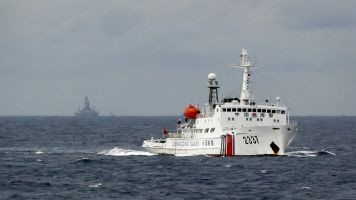Slowly the thoughts change over the span of few years and credibility takes place of the incredible faces! It is now when the sense of diminishing, created by the previous government, seems to evade. It is this faith that has been earned by our national government, “If it is anything that has a positive impact on the growth of the nation, it is adopted and executed fine.”
In yet another achievement, a MoU has been signed between the International Seabed Authority (ISA) and the Indian government.
With this measured move, New Delhi has silently made an entry into the Indian Ocean to lend thunders to the countries which play foul behind the mask of a friend. As a clause of this legal document, Indian authorities possess the independent rights to explore and extract the Polymetallic Sulphides (PMS) in the Indian Ocean.
Before I move ahead lauding the silent yet selected move of the people at Raisina, let me introduce you to the International Seabed Authority, just in case you two are unacquainted with each other!
What is International Seabed Authority?
An Organisation which was established under the Laws of the sea convention, International Seabed Authority is an intergovernmental body. Currently based in Kingston of Jamaica, the purpose of the establishment of this Authority is to channelize, regulate and control any and every mineral activity lying under the international seabed area. Basically, control of any seabed that is out of the national jurisdiction of any territory is organised by this Authority.
It was in the October of 1996 when the United Nations became the observer bodies of ISA and in the present date, it is a group of 167 member countries.
What is Polymetallic Sulphide?
To be precise, the PMS are the precipitates of the hot fluids which are collected as a result of the upwelling of the hot magma from the interiors of the oceanic crust.
Having the iron, copper, silver, gold, zinc and platinum in the varying proportions of the constituents, the PMS has attracted the global viewership because of their longevity in the commercial and the strategic areas.
What is the big deal about this MoU?
Gathering an idea about the Authority and a little hint about the legalisation involved, it is general human tendency to predict the reasons why this particular documentation is worth the hype! However, I will seek your permission to introduce you formally to the different aspects to be read between the lines.
First thing first, it will provide India with Polymetallic Sulphide aka PMS and the commercial and the strategic value of same are making it to the international media. This was the scholarly point to be expected out of the deal.
Besides this, it is a strategic masterstroke played out of efficient diplomacy as Indian presence in the Indian Ocean will allow it to keep an eye on the activities of pre-active Germany, Korea and most importantly China.
It’s significance further increases considering the proximity of Indian Territory from the boundless Indian Ocean.
WOW! So what really happened?
Now, since you are mesmerised by this successful manoeuvre, I will take this as an opportunity to embellish further on the MoU signed between the two parties.
The clauses of the legal contract will be enforced by the Ministry of the Earth Sciences. In this procedure, the government plans to involve and benefit from the participation of different research organisation and laboratories along with few national institutes.
This contract signed by Mr M Rajeevan, Secretary, Ministry of Earth Sciences and Mr Nii Allotey Odunton, Secretary-General of the ISA is a result of continuous efforts of the Indian government.
This came after a series of events. ISA had earlier given an approval to the application of the Ministry of Earth Sciences seeking allotment of 10,000 square km of the area along the Central Indian Ridge (CIR) and Southwest Indian Ridge (SWIR) region. Ministry also proposed a work plan for over 15 years for the exploration of the PMS.
The allotted area consists of 100 blocks of 10*10 km and is divided into five different clusters having 15 to 30 blocks each. The area of application is confined within a rectangular area and the longest side of the same does not exceed 1,000 km in length.
With this contract in particular, India has managed to track the Chinese activities, intervention and the malpractices against the health of the integrity of India.
Accept it or not but the people involved in making this a reality deserve your attention! For it is time to exploit the commercial resource with a strategic influence.


































